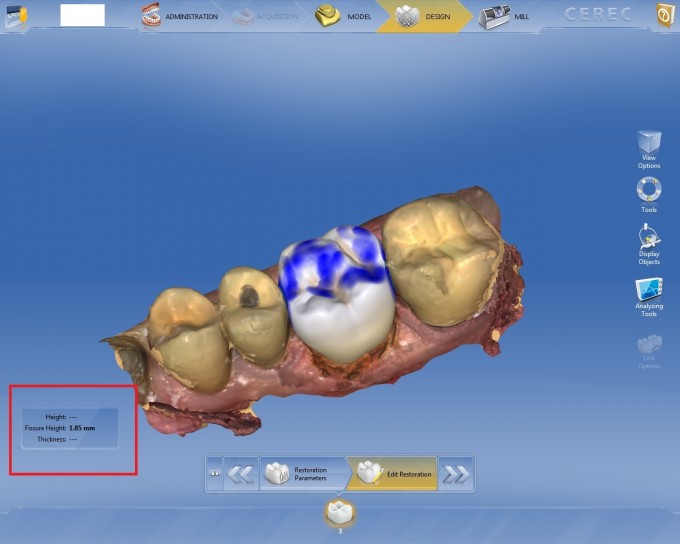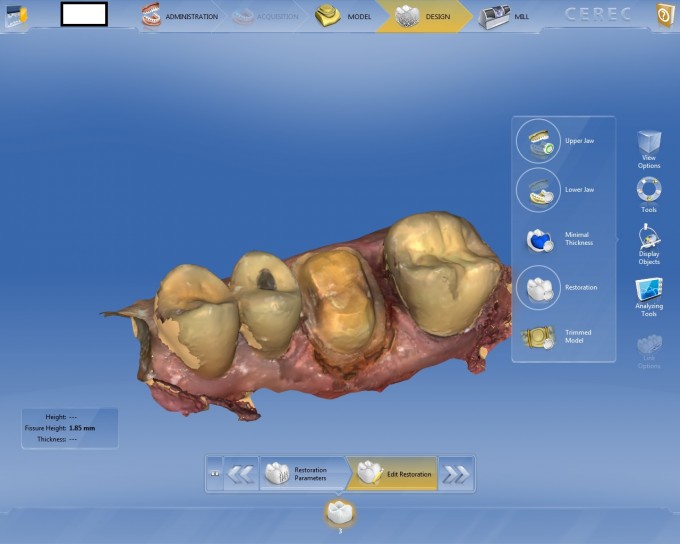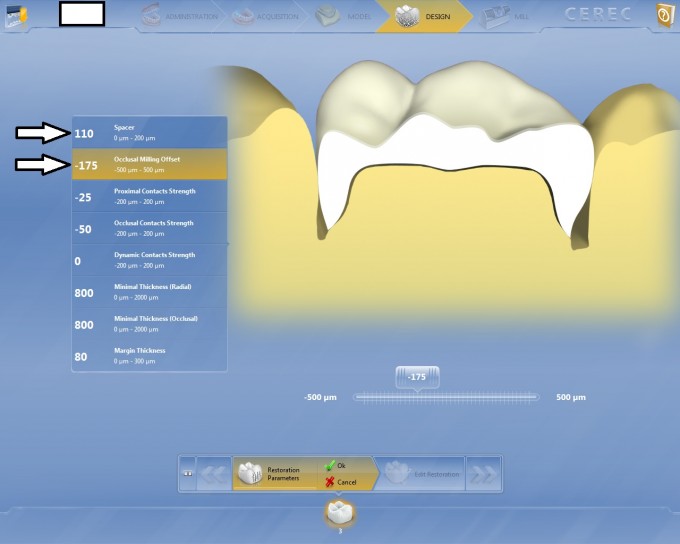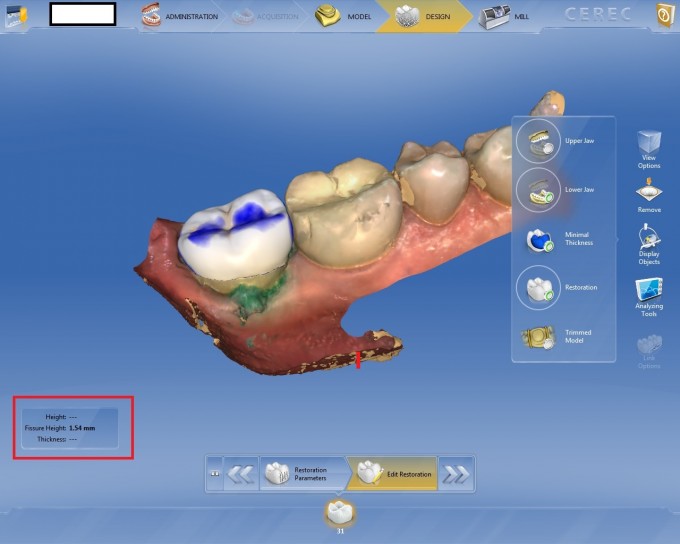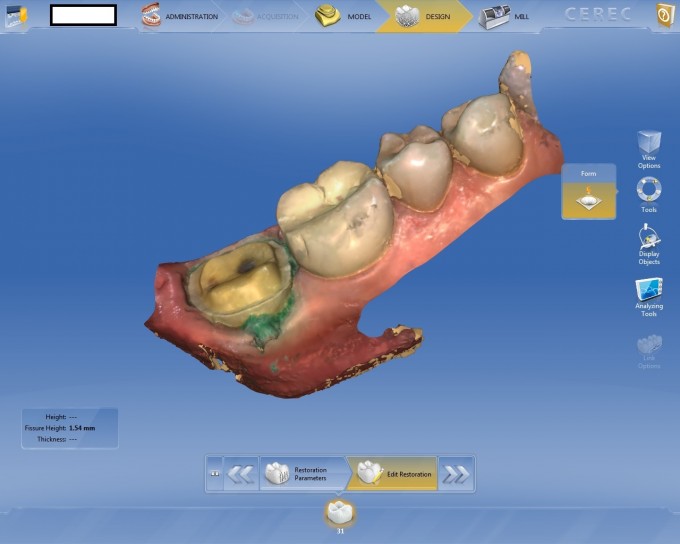The Hidden CEREC Calculation When Cementing vs. Bonding
One of the most common questions we get from new and existing users is when can I bond e.max and when can I cement it. I base that answer for my personal cases on a few things.
- Do I have enamel to bond to?
- Can I isolate the margin and keep the area dry for an adhesive protocol?
- Do I have enough ferrule for cement to retain the restoration on the tooth?
- Do I need the added strength of the bonded restoration because patient is a bruxer?
- Most important of all: Is the restoration thick enough?
If I have good enamel to bond to and I can keep the prep dry from bleeding and saliva during the cementation process, I almost always bond my restoration personally. I know that some advocate cementing restoration whenever possible because cutting off bonded e.max is not a fun experience!! My problem with the cementing philosophy is that the biggest mistake that most dentists make is that they don’t reduce enough. Ivoclar has tested bonding e.max down to 1mm at the central fissure. To cement an e.max you need 1.5mm of MATERIAL at the central fissure. This is where I will probably confuse some because it is time for math. When you activate your cursor details and look at the thickness at your central fissure, a 1.5mm reading does not mean 1.5mm of material. We have two parameters that are not taken into account when calculating the central fissure measurement, Spacer and Occlusal Offset. When I have a measurement of 1.5mm at the fissure, I must subtract the Spacer measurement (110 microns in my case or .11mm) and -175 Occlusal Offset (.175mm). If you add these two together, that means that we need to subtract .285mm from the 1.5mm reading at the central fissure to give us a true thickness of approximately 1.22mm. Ivoclar recommends 1.5mm thickness of material to cement it, so this thin area will increase the chances of the restoration failing. Let's look at two cases.
The initial two screen shots shows central fissure at 1.85mm and we have a lot of ferrule available to be able to cement this restoration and retain it on the tooth. The parameters of this restoration show 110 microns of Spacer and -175 Occlusal Offset. Subtract that .285mm from 1.85mm and we are just around 1.57mm. I was comfortable with this measurement and did cement this restoration.
The second case shows where I have tried to keep the margin on the buccal high and dry. Even if I dropped it lower on the buccal, I was not comfortable reducing any more in the central fissure area. We were are 1.54mm according to the cursor details but after subtracting Spacer and Occlusal Offset, we are actually at 1.25mm. In this case I had tons of enamel and easy isolation and decided to bond.
For me, many factors go into whether I bond or cement. I usually lean towards bonding but I have only had two failures in seven years with e.max from fracture. Cementing works well when case selection ( and math) are done properly!
OB, I pulled out every mathematical device I have. Abacus, slide rule, protractor, scientific calculator. At the end, I just gave my kids the numbers and had them figure it all out for me!
All kidding aside, thanks and this is a key component to understanding whether or not the emax is thick enough to be cemented



